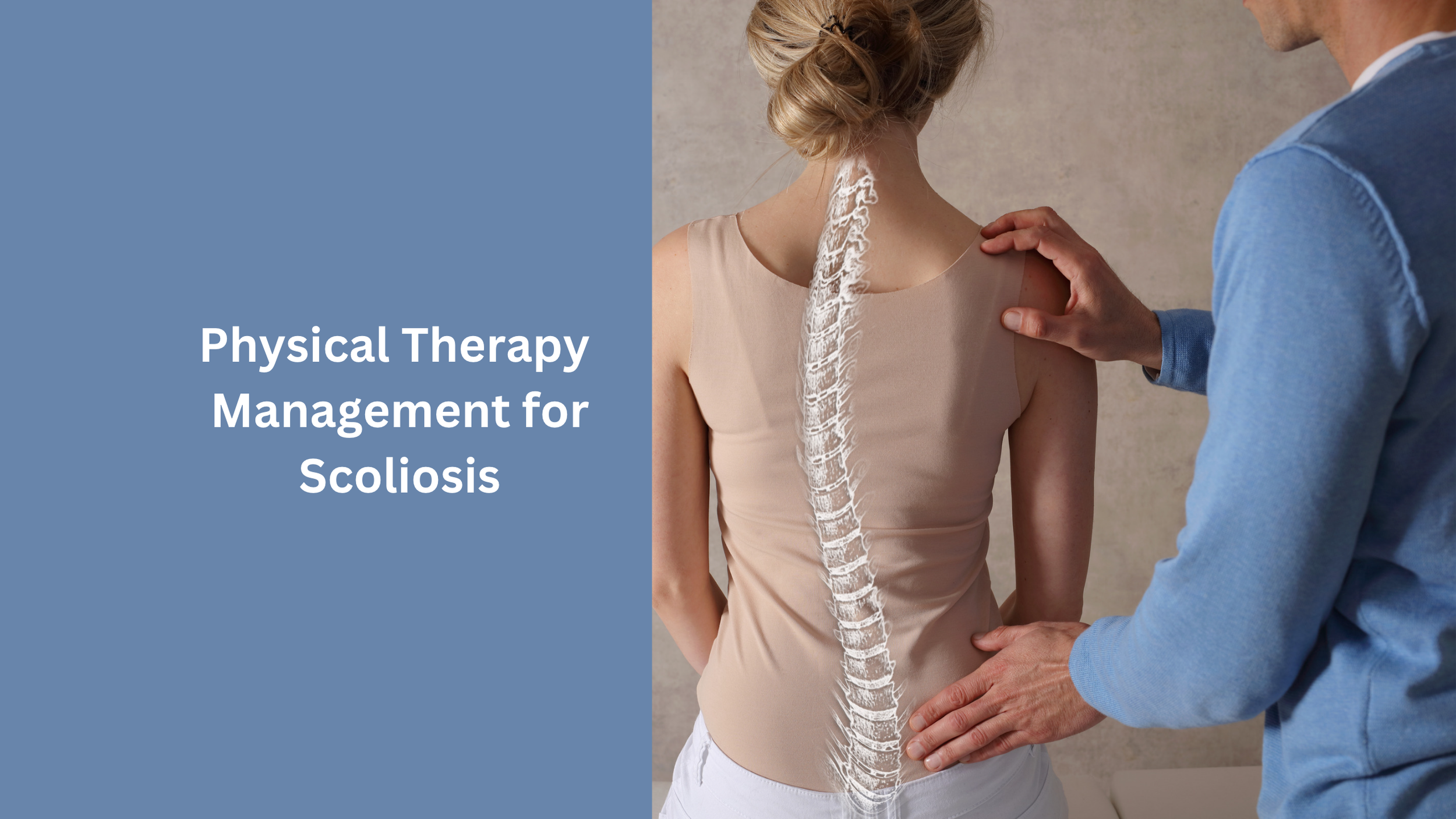Mangiarelli Rehabilitation Physical Therapy Blog
Backpack and School Ergonomic Tips
Check out our infographic on backpack and school ergonomic tips! Carrying a backpack can have significant biomechanical, physiological, and discomfort impacts on a child during a critical time of growth, placing undue stress on the body, changing posture, and leading to back, neck and shoulder pain. Our 7 tips highlight how to ensure the backpack is loaded safely carried correctly, proper posture and lifting technique when using a backpack, and computer use safety while at school.
July 2024 Newsletter
Check out our July 2024 Newsletter, highlighting managing cervicogenic headaches with physical therapy, physical therapy management for scoliosis, and three shoulder stabilization exercises.
Physical Therapy Scoliosis Management [Infographic]
Check out our infographic on physical therapy management of scoliosis! Scoliosis is a condition that affects the normal shape of the spine, altering a person’s back alignment and posture and causing a lateral curvature of the spine. Physical therapy is an effective, non-invasive treatment method to manage scoliosis, stabilize the scoliosis curve, improve postural alignment, enhance neuromuscular control and muscular strength, and improve overall function in individuals with scoliosis.
April 2024 Newsletter
Check out our April Newsletter, highlighting 8 tips to prevent low back pain this gardening season, exercise rehabilitation for multiple sclerosis, the best exercise to improve hip flexor stength, and the role of nutrition in osteoarthritis symptom management.
8 Tips to Prevent Low Back Pain this Gardening Season
With the start of spring, many of us begin planning our gardens, including weeding, raking, and preparing for planting. Gardening has many health benefits, but injuries can occur. The low back can be particularly susceptible to injury during gardening as bending, lifting, and squatting can cause you to twist your body into awkward positions or to overstretch, leading to muscle strains or sprains. Check out our 8 tips to prevent low back pain this gardening season!
Physical Therapy for Sacroiliac Joint Dysfunction [Infographic]
Sacroiliac joint dysfunction (SI joint) involves injury to the sacroiliac joint that typically presents as low back pain on one side of the body. The main function of the SI joints is to provide a stable yet flexible support to the upper body while distributing the load from the lower extremities throughout the rest of the body. SI joint dysfunction can arise due to an acute trauma to the joint, pregnancy and childbirth, or conditions like arthritis and scoliosis. Physical therapy can address SI joint pain, help to stabilize the joint, and improve function through targeted stretching and strengthening exercises and manual therapy.
Back-to-School Backpack Safety
Check out our 7 tips for back-to-school backpack safety! Backpacks, when worn correctly, are designed to distribute the weight of the load evenly across the body’s muscles. However, many children carry backpacks incorrectly or that are too heavy. Carrying a backpack can have significant biomechanical and physiological impacts on the wearer during a critical time in a child’s growth, placing undue stress on the body, changing posture, and contributing to injuries of the back, neck, and shoulders
Physical Therapy Scoliosis Management
Scoliosis is a condition that affects the normal shape of the spine, altering a person’s back alignment and posture and causing a lateral “s” or “c”-shaped curve in the spine. The abnormal curvature of the spine can place stress on the surrounding muscles and joints, causing loss of strength and flexibility in the spinal and back muscles over time. Physical therapy is an effective, non-invasive treatment method to manage scoliosis, stabilize the scoliosis curve, improve postural alignment, enhance neuromuscular control and muscular strength, and improve overall function in individuals with scoliosis.
Physical Therapy for Sciatica
Sciatica is nerve pain that radiates from the low back through the buttocks and down the length of the leg due to compression of the sciatic nerve. Originating in the low back, the sciatic nerve is most commonly compressed by a herniated or slipped disc, causing shooting pain and tingling and numbness through the back and leg. Physical therapy is one of the most effective treatments for sciatica, reducing inflammation, managing and minimizing pain, improving your physical function and mobility, and preventing the reoccurrence of sciatica symptoms.
Office Ergonomics: Tips for Maintaining Good Posture
Check out our 7 tips for an ergonomic workstation! An ergonomic workstation is one that supports your body in a neutral position and reduces the risk of discomfort or pain that the stressors like sitting at a desk and computer for long periods of time can place on our bodies. Poor office ergonomics and posture can contribute to ongoing aches and pain, such as neck strain, low back pain, wrist discomfort, or eye strain. However, proper workstation ergonomics—correct chair height, appropriate equipment spacing, and good desk posture—can help you stay productive but healthy and comfortable at work.
Physical Therapy for Spondylolysis in Teens
Spondylolysis is a lumbar stress fracture in the pars interarticularis, the bony bridge that connects the upper and lower facet joints of the vertebrae. Spondylolysis is a common cause of low back pain in adolescent athletes, caused by repetitive loading, backward bending, and twisting of the lower back. Physical therapy can successfully manage spondylolysis in adolescent athletes, helping to reduce pain, improve strength and function in the low back, and safely return athletes to sports competition.
October 2022 Newsletter
Check out our October Newsletter that highlights celebrating National Physical Therapy Month, physical therapy for spinal stenosis, how to protect your back when raking leaves, physical therapy for tennis elbow, and our fall donation drive with the St. Vincent de Paul Society.
How To Protect Your Back When Raking Leaves
Autumn brings with it stunning landscapes of red, gold, and orange leaves. However, the aftermath of the turning of the leaves can involve raking and bagging an enormous number of leaves in our yard. Weekly leaf raking during the fall can take quite a toll on your body if you are using incorrect biomechanics that strains your back, neck, and shoulders. The low back is particularly vulnerable to injury when raking due to the repetitive movements and constant bending and lifting of raking. Check out our tips to protect your back this season when raking leaves!
Physical Therapy for Spinal Stenosis
Spinal stenosis is a degenerative condition of the spine that involves narrowing of the openings within the vertebrae of the spinal column that results in too much pressure on the spinal cord and nerves, causing pain and weakness in the low back. Spinal stenosis can develop after the age of 50 due to the effect of aging and osteoarthritic wear and tear on the spine and spinal vertebrae. Physical therapy provides an effective treatment for spinal stenosis, helping patients regain function, mobility, and strength in their low back and relieving compression of the spinal nerves.
Managing Chronic Pain with Exercise
Chronic pain affects up to 28% of American adults each year and is one of the most common reasons adults seek medical care. Chronic pain develops when the nerves that communicate pain to the brain become hypersensitive, causing the brain to perceive that area of the body as a potential threat and therefore painful beyond the normal healing timeframe. Exercise is an effective way to manage chronic pain by building muscle strength, reducing pain sensitivity, and improving mobility through targeted strengthening, low-impact aerobic exercise, stretching, and aquatic therapy.
Ergonomic Tips for Backpack Safety
Carrying a backpack can have significant biomechanical, physiological, and discomfort impacts on the wearer, placing undue stress on the body, changing posture, and leading to back, neck, and shoulder pain. It’s essential that parents take steps to prevent backpack-related musculoskeletal pain in their children this school year. Check out our ergonomic tips for backpack safety!
Exercises to Relieve Low Back Pain
On the blog, Mangiarelli Rehabilitation physical therapist Bobby demonstrates exercises to relieve acute low back pain. Low back pain is the most common condition treated by physical therapists, affecting 30% of Americans each year. Low back pain can involve dull, burning, throbbing, sharp, or shooting pain in the lumbar spine and through the buttocks and leg. Physical therapy is the first line of treatment for low back pain. A physical therapist can improve and restore mobility in the low back as well as reduce low back pain without expensive surgery or pain medications.
Physical Therapy for Piriformis Syndrome Infographic
Check out our infographic on physical therapy for piriformis syndrome! Piriformis syndrome develops due to tightening of the piriformis muscle, which can irritate and compress the sciatic nerve and cause pain through the buttocks, low back, and back of the leg. Physical therapy can isolate the true origin of the piriformis syndrome pain, help relieve pain, and restore normal movement and range of motion in the affected area through stretching, manual therapy, and targeted strengthening.
Spring Gardening Injury Prevention Infographic
Check out our 10 spring gardening injury prevention tips in our latest infographic! While gardening has many health benefits, it also is a physically demanding activity that can place strain and stress on your body. Keep these 10 tips in mind to prevent injury while gardening this spring!
Aquatic Therapy at Mangiarelli Rehabilitation
At Mangiarelli Rehabilitation, aquatic therapy takes place in our warm water therapeutic pool with our aquatic therapy specialist, Sue. Aquatic therapy provides a safe and effective environment to build strength, improve mobility and balance, and enhance function with minimal stress on your joints. On the blog, our aquatic therapist, Sue, explains what aquatic therapy involves, ways it can benefit you as a patient, and how it can improve your strength and reduce pain.


![Physical Therapy Scoliosis Management [Infographic]](https://images.squarespace-cdn.com/content/v1/5e419cdc97af032560004b99/1719256882541-G5U3OJK4W330V15FC38E/Tw+Scoliosis+Infographi.png)


![Physical Therapy for Sacroiliac Joint Dysfunction [Infographic]](https://images.squarespace-cdn.com/content/v1/5e419cdc97af032560004b99/1692628325284-XS9SDRSC5W8BAVHUSQPU/Blog+SI+Joint+Infographic+.png)

























